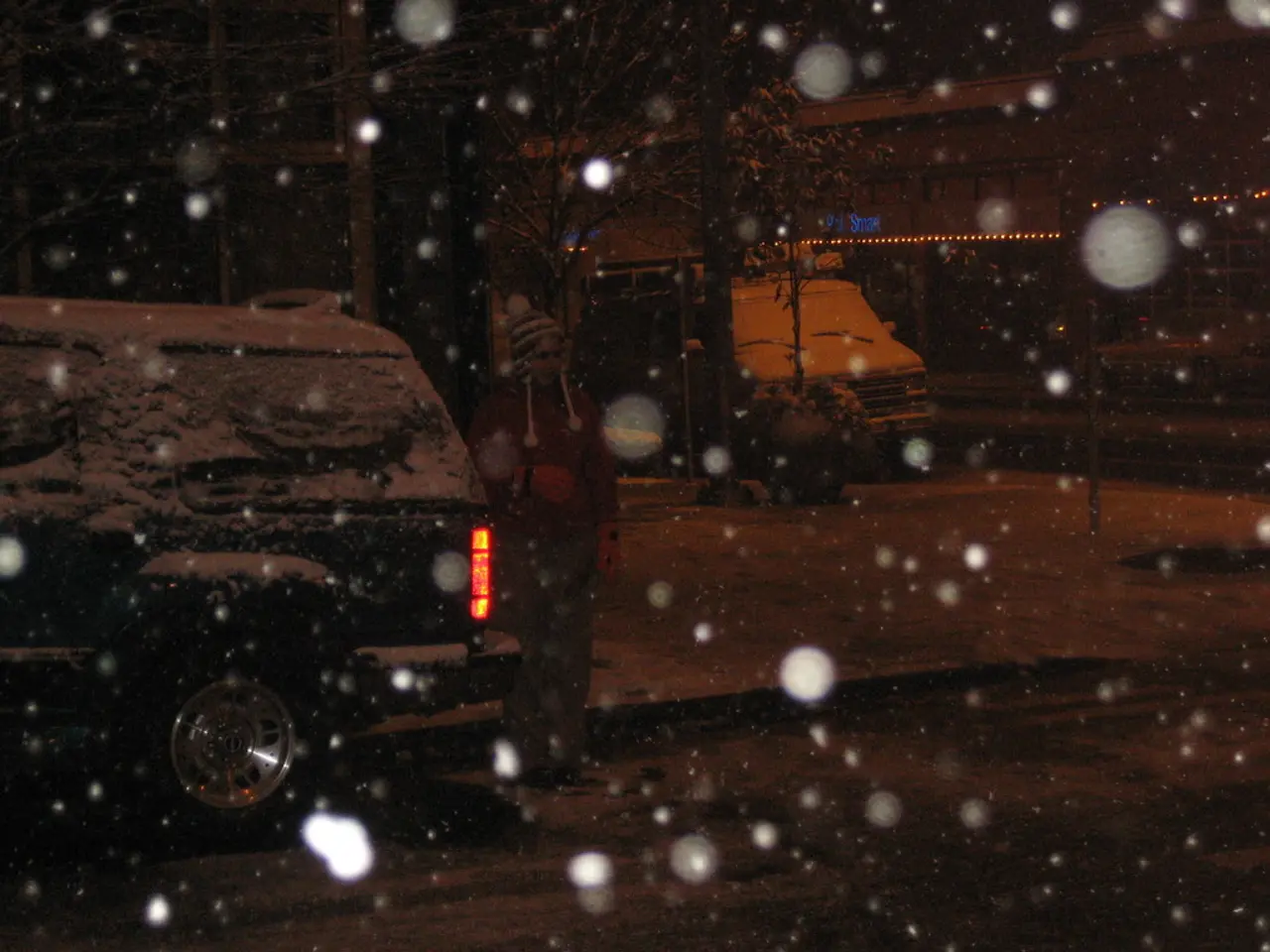Torrential downpours sweep across the Midwest, while searing heat persists in the Western regions
Flooding Crisis Hits Milwaukee: Historic Rainfall, Emergency Declarations, and Rescue Operations
Milwaukee, Wisconsin, was hit by a severe bout of flooding on Sunday, August 10, 2025, marking one of the worst flash flooding events since 2008. The city and its surrounding areas, including Wauwatosa, Waukesha, and neighboring counties, were significantly impacted.
The flooding was the result of a combination of atmospheric conditions, including a weak disturbance triggering thunderstorms, high humidity with moisture inflow from the southwest low-level jet, and a Mesoscale Convective Vortex (MCV) that intensified rainfall. Overnight from August 9 to 10, Milwaukee and nearby counties experienced torrential rain, with rates of one to two inches per hour.
County Executive David Crowley declared a state of emergency in Milwaukee County, enabling officials to deploy additional resources. The National Guard was activated, and multiple counties declared states of emergency due to the flooding. The flooding inundated neighborhoods, submerged vehicles, closed numerous roads, caused power outages, and led to over 500 emergency calls. The Milwaukee Fire Department performed about 65 water rescues, many involving people stranded in vehicles. Rivers and streams burst their banks, compounding the flooding impact.
Rainfall totals across Milwaukee and nearby counties ranged from five to ten inches over the event. The flooding overwhelmed stormwater and sewer systems, causing significant property damage and life-threatening conditions. Recovery efforts were ongoing in the days following, with hopes for state and federal assistance activated under emergency declarations.
Meanwhile, other parts of the country were also grappling with extreme heat and fire weather concerns. Extreme heat warnings remained in effect for most of the West, including Phoenix, Ariz., and Palm Springs, Calif., where temperatures were expected to be well past the century mark and could climb as high as 115 degrees.
In a separate incident, Chicago reported one dead and five injured in a mass shooting, but this event was not directly related to the flooding in Milwaukee.
As the flooding continues to unfold across the Midwest, a flood watch has been issued from Wichita, Kan., to Milwaukee through Monday morning, including the cities of Madison, Wis.; Kansas City, Kan.; and Rockford, Ill. Flash-flooding threats are expected to continue throughout Sunday, with multiple rounds of slow-moving storms expected to produce downpours at rates of one to more than three inches per hour. By the end of the weekend, some areas of the Midwest could receive up to nine inches of rain from the multi-day storms.
Storms hitting the area are also producing damaging winds and isolated large hail. Other places in the West that are under heat advisories on Sunday include parts of North Texas and Oklahoma City, Okla.
[1] Milwaukee Journal Sentinel: Historic flooding hits Milwaukee area
[2] CBS 58: Milwaukee County declares state of emergency due to flooding
[3] NBC 15: Flash flood warnings issued for southeast Wisconsin
[4] Milwaukee Fire Department: 614 emergency calls, 65 water rescues during flooding
[5] Wisconsin Emergency Management: Flooding emergency declarations
- International General-News: The historic flooding in Milwaukee, Wisconsin, on August 10, 2025, has sparked emergency declarations not only in Milwaukee County but also in nearby counties, necessitating assistance from the National Guard and causing over 500 emergency calls.
- Environmental-Science: The flooding in Milwaukee was due to a combination of atmospheric conditions, including a weak disturbance, high humidity, and a Mesoscale Convective Vortex (MCV), resulting in torrential rain lasting overnight from August 9 to 10, with rates of one to two inches per hour.
- Weather: A flood watch has been issued from Wichita, Kansas, to Milwaukee through Monday morning, including several cities, as multiple rounds of slow-moving storms are expected to produce downpours at rates of one to more than three inches per hour, potentially causing additional flooding threats throughout Sunday.








